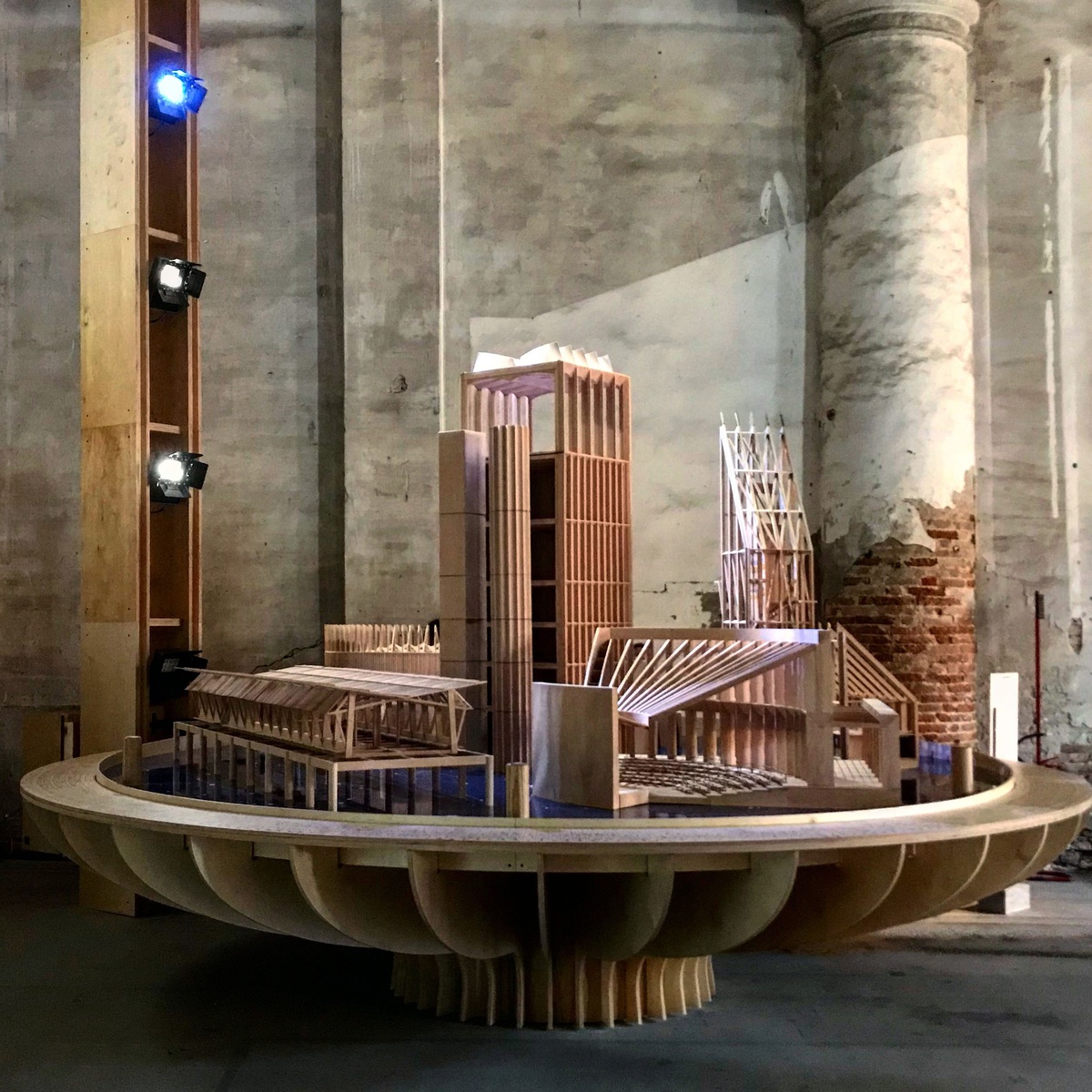ARCHITECTURE AS AN INSTRUCTION-BASED ART – HARVARD UNIVERSITY EXHIBITION
SEPTEMBER 2024

An exhibition has opened at the Druker Design Gallery at Harvard University titled ‘Architecture as an Instruction-Based Art’. The exhibition is a selection of drawings which are used to coordinate the process of construction, that is, drawings which reflect the nature of architecture as an “instruction-based” art. We selected a drawing from our International Rugby Experience project in Ireland that shows the complex co-ordination and layering of construction from ceiling to roof level. Here each bay of the sculptural ceiling transitions upwards from an expansive oculus aligned with the building axes, twisting through 20 degrees to accommodate eye-shaped north-facing skylights and bespoke solar shades at roof level.
The exhibition has been curated by the Farshid Moussavi and runs until the 15th October. More information can be found on the Harvard website here.
BIENNALE ARCHITECTTURA 2018
JUNE 2018

The 2018 Venice Biennale opened to the public on the 26th May. This year’s theme “focuses on architecture’s ability to provide free and additional spatial gifts to those who use it and on its ability to address the unspoken wishes of strangers”.
Our contribution is a collection of six large-scale models, each representing a hall for gathering that the practice has designed. These models are placed upon a rotating table which is a calendar and a cosmic machine. Each hall has a different purpose yet they all bring people together in a rhythmic and cyclical fashion daily, weekly and annually. The specific uses of each building are regulated by a calendar of events, rituals and times of congregation. Their calendars are inscribed on the outer rim of a turning table. The table can be rotated by hand. When you turn it, varying light falls upon the models representing the passage of the sun through the day from dawn to dusk. It is a manual and mechanical process.
The intention of presenting these models in this way is to emphasise the relationship between the enduring frames of the buildings and the endless procession of fugitive elements that pass through them periodically.

